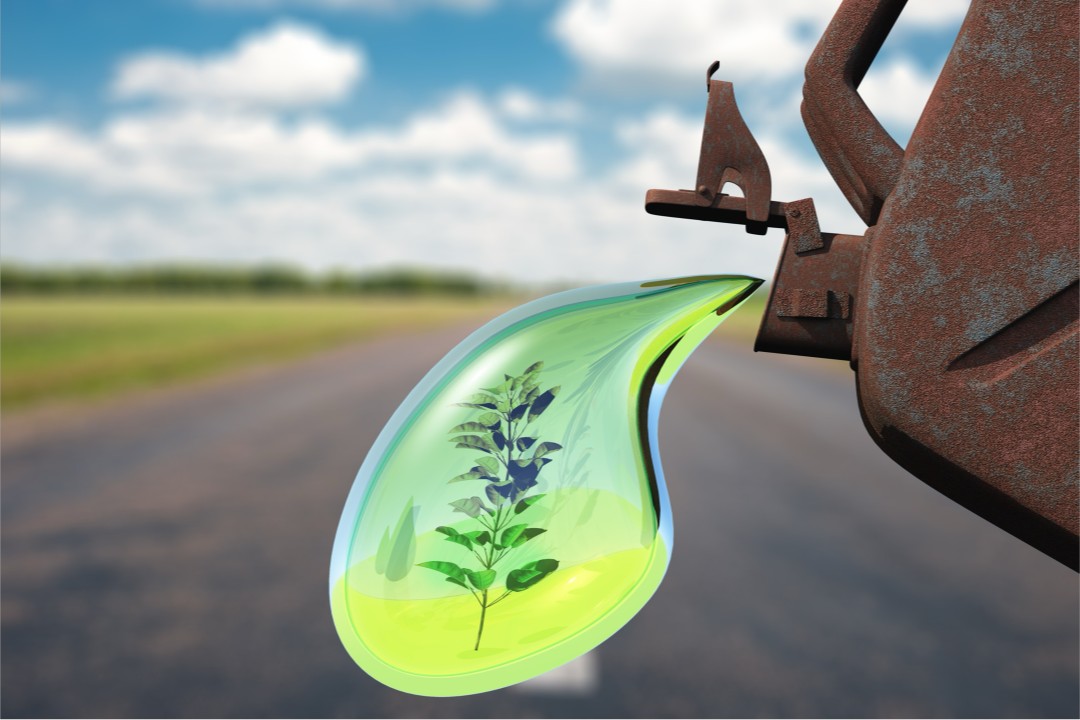
Biofuels are crucial for decarbonizing road transport, aviation, and shipping. Traditionally derived from food crops and increasingly from waste biomass, biofuels offer low-carbon, drop-in replacements for conventional liquid fuels. Biodiesel and ethanol, for example, displace millions of barrels of oil demand annually. Meanwhile, synthetic, hydrogen-based e-fuels are gaining traction, supported by growing public policies. According to the International Energy Agency, sustainable biofuel production must triple by 2030 to stay on track for net zero emissions by 2050. The demand for sustainable aviation fuel (SAF) is projected to see the most significant increase.
Europe’s “Fit for 55” policy package and the US Inflation Reduction Act (IRA) are the largest energy transition policies globally. They are expected to drive the consumption of low-carbon fuels and more than double the use of biofuels and alternative liquids by 2050.

Several regions have become biofuel production hubs, driving innovation, investment, and policy development:
Scaling up biofuel production requires addressing several challenges, including ensuring the availability of sustainable feedstocks on a large scale, developing cost-effective production methods, and making significant investments in infrastructure. Overcoming these challenges is essential for the widespread adoption of biofuels as a sustainable energy source.
Current biofuel production relies heavily on conventional feedstocks like sugar cane, corn, and soybeans. Expanding to advanced feedstocks is critical to minimize impacts on land use, food and feed prices, and other environmental factors.
Controversies exist regarding production’s impact on food security and land use. Critics contend that dedicating land to biofuel crops could increase food prices and create competition for agricultural resources. However, proponents argue that second-generation biofuels and sustainable land use practices can alleviate these concerns.
Non-food feedstocks dominate biofuel production, such as used cooking oils and waste animal fats. However, new technologies are needed to expand the use of non-food crop feedstocks. Ethanol and fatty acid methyl esters (FAME) biodiesel are produced via established pathways, while renewable diesel and SAF are ramping up, primarily through hydrotreated esters and fatty acids (HEFA). To meet demand, the industry is turning to costlier processes like cellulosic ethanol and biomass-based Fischer-Tropsch. Policymakers hope these newer technologies will become more affordable and bridge the gap between advanced biofuels and fossil fuels.
Biofuels hold significant potential for replacing fossil fuels across various sectors. In transportation, blending biofuels with gasoline or diesel can reduce the carbon footprint of vehicles. Moreover, aviation biofuels derived from sustainable feedstocks show promise in cutting greenhouse gas emissions in the aviation industry.
However, integrating biofuels into existing energy systems presents challenges. Infrastructure modifications may be necessary to accommodate the distribution and storage of biofuels. Additionally, for widespread adoption, the economics of biofuel production must be competitive with fossil fuels.

Biofuel consumption, driven by regulatory efforts, has primarily been concentrated in road transport. In 2023, 99% of the 3 million barrels per day (b/d) of biofuels used in transportation were in road transport. This trend is expected to change as emissions reduction legislation increasingly targets aviation and shipping. Biofuel consumption in road transport is projected to grow to nearly 4 million b/d by 2040 but will decline post-2040 due to reduced road fuel demand. Mechanisms like CORSIA, ReFuelEU Aviation, and the US IRA will boost biofuel use in aviation, with SAF consumption projected to exceed 2.1 million b/d by 2050.
Biofuel uptake in shipping will remain limited, with other options like methanol and ammonia being explored for emission reductions.
2023 global biofuel production was 3 million b/d, mainly ethanol (63%) and FAME (28%). Renewable diesel and SAF accounted for less than 10%. Total biofuel output is expected to double by 2050, with significant growth in renewable diesel and SAF. Ethanol production will peak in the mid-2030s and then decline. FAME supply will grow steadily, while SAF and renewable diesel production will ramp up quickly. By 2050, America’s share of global biofuel production will decrease, while Asia and Europe will expand their capacity.
Interest in using biofuels for marine propulsion is growing, driven by climate targets and the search for decarbonization pathways. However, biofuels are expected to play a limited role in decarbonizing shipping compared to alternatives like methanol and ammonia.
Ongoing research, technological advancements, policy support, and collaborations are driving biofuel adoption. Challenges include scaling up production, sustainable feedstock availability, and cost-effective methods.
In the Net Zero Scenario, biofuel use in transport will rise significantly by 2030, with a greater share produced from waste, residues, and non-food crops. Aviation biofuels, or biojet kerosene, will need to make substantial strides to align with net zero goals.
The future looks promising, with potential growth driven by technological advancements and supportive policies. Continued investment and collaboration will be essential for achieving a sustainable energy future.

I’ve spent the past 18+ years helping ports, supply chains, and global businesses turn sustainability goals into real, measurable results.
From leading billion-dollar infrastructure projects to building my own consulting firm, I’ve seen how the right strategy can turn pressure into opportunity.
My mission today is simple: help leaders like you build sustainable, future-ready businesses that don’t just check boxes—but actually make an impact. One decision, one project, one team at a time.
Let’s build what’s next—together.
Have a project or idea in mind?
I’d love to hear what you’re working on.
Book a quick call here